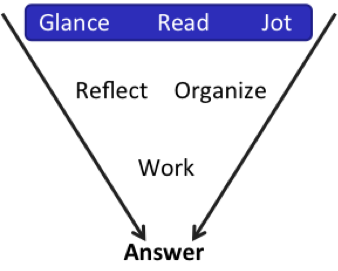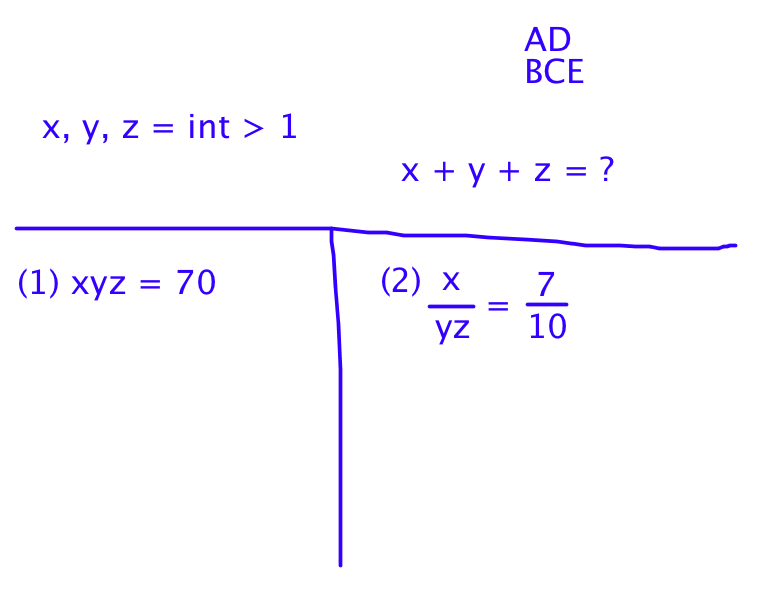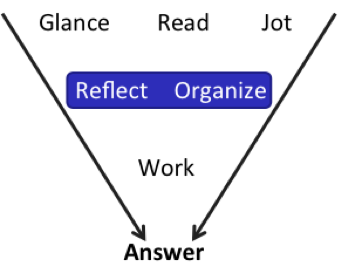-
Target Test Prep 20% Off Flash Sale is on! Code: FLASH20
Redeem
Decoding Divisibility and Prime on the GMAT - Part 1
 Most of my students are driven crazy by Number Properties. On the face of it, the topic seems straightforward: I know what positive and negative, odd and even are. Divisibility stuff is a little more complicated, but come on: this was taught in school when we were 10! How hard can it be?
Most of my students are driven crazy by Number Properties. On the face of it, the topic seems straightforward: I know what positive and negative, odd and even are. Divisibility stuff is a little more complicated, but come on: this was taught in school when we were 10! How hard can it be?
Plenty hard, it turns out. The GMAT obviously cant test you on what you were taught when you were 10; thatd be way too easy. So they have to find some way to make things conceptually harderand they have definitely succeeded on Number Properties. (I secretly admire how good they are at testing NP, actually. I just dont like to admit it.)
So were going to dive into a series of NP problems to see how they mess with us. Well focus specifically on divisibility and prime, the topic that tends to be the most tricky. Try this GMATPrep problem from the free exams and then well talk!
*If x, y, and z are integers greater than 1, what is the value of x + y + z?(1) xyz = 70
(2) [pmath]x/yz=7/10[/pmath]
Got your answer? Okay, first, lets understand whats going on.
Glance: DS. Three variables. The question is a combo (that is, I dont necessarily have to find the individual values for these variables). Maybe Im going to have to test cases?
Read: Cant do much with the question stem, besides writing down that info.
Jot:
How should I approach this?
Hmm. Theyre all positive integers greater than 1. That's intriguing; why greater than 1 and not the more common greater than 0? I'll need to think about that.
I just have to find the sum of the variables, not the individual variables. And each statement uses all three variables and provides some real numbers.
So the question is whether I can rearrange that info somehow to tell me the sum, even if it doesnt tell me the individual variables. Lets see.
(1) xyz = 70
If theyre all integers, then they have to be made up of the various possible factors of 70.
Oh! This is key: theyre all integers greater than 1, so I can ignore the factor pair (1, 70). In other words, what I really care about is the prime factors of 70. I was wondering why they told me such a weird piece of info.
Okay, so I need to break 70 down into its prime factors and then test cases with those numbers to see whether I get a definitive sum or multiple sums.
70 = (7)(10) = (7)(2)(5)
There are three variablesand three prime factors. So the three variables have to be 7, 2, and 5! The sum of those three numbers is always the same, regardless of the order in which the addition occurs. Statement (1) is sufficient to answer the question.
(2) [pmath]x/yz=7/10[/pmath]
(Remember, reflect first! Dont just dive in.) Fractions are annoying, so I could try cross-multiplying. That would give me 10x = 7yz. That doesn't actually look simpler (at least, not to me!), though.
Oh, or how about this: x could be 7 and yz could be 10, in which case y and z have to be 2 and 5, in some order. That works! And those are the same numbers as in statement (1). Yay!
But wait. Reflect some more. This is one possible solution, yes, but is it the only one?
What if x = 14 and yz = 20? In that case, statement (2) is still true, but the values have changed. Will the sum be the same? No! Itll be larger, since the values are larger.
Statement (2) allows more than one possible sum, so it is not sufficient to answer the question.
The correct answer is (A).
Now, are you starting to see how the GMAT has found a way to make NP hard? The pure math that had to be done here wasnt crazy hard. But the conceptual thinking was definitely not what we were taught in school. This is how theyre going to test your adult-level thinking of NP topics.
Key Takeaways for Divisibility and Primes on the GMAT:
(1) Theyre not testing pure math here. Theyre testing theory. Youre going to have to learn how to take Number Properties rules and think about them conceptually.
(2) In order to do that, youll need to start picking up on the clues that they give in the way that they present the information. One key clue was that integers greater than 1 piece coupled with multiplication later in the problem (in the statements). When you multiply integers greater than 1, those integers become factors of the larger number you create. This is your clue that youre being asked about the factors of some numberand this puts you squarely in the category of Divisibility and Primes, one of the main topic areas under Number Properties.
(3) Youre not done yet! Join us for our next installment, when well work through a harder problem.
* GMATPrep questions courtesy of the Graduate Management Admissions Council. Usage of this question does not imply endorsement by GMAC.
Recent Articles
Archive
- May 2024
- April 2024
- March 2024
- February 2024
- January 2024
- December 2023
- November 2023
- October 2023
- September 2023
- July 2023
- June 2023
- May 2023
- April 2023
- March 2023
- February 2023
- January 2023
- December 2022
- November 2022
- October 2022
- September 2022
- August 2022
- July 2022
- June 2022
- May 2022
- April 2022
- March 2022
- February 2022
- January 2022
- December 2021
- November 2021
- October 2021
- September 2021
- August 2021
- July 2021
- June 2021
- May 2021
- April 2021
- March 2021
- February 2021
- January 2021
- December 2020
- November 2020
- October 2020
- September 2020
- August 2020
- July 2020
- June 2020
- May 2020
- April 2020
- March 2020
- February 2020
- January 2020
- December 2019
- November 2019
- October 2019
- September 2019
- August 2019
- July 2019
- June 2019
- May 2019
- April 2019
- March 2019
- February 2019
- January 2019
- December 2018
- November 2018
- October 2018
- September 2018
- August 2018
- July 2018
- June 2018
- May 2018
- April 2018
- March 2018
- February 2018
- January 2018
- December 2017
- November 2017
- October 2017
- September 2017
- August 2017
- July 2017
- June 2017
- May 2017
- April 2017
- March 2017
- February 2017
- January 2017
- December 2016
- November 2016
- October 2016
- September 2016
- August 2016
- July 2016
- June 2016
- May 2016
- April 2016
- March 2016
- February 2016
- January 2016
- December 2015
- November 2015
- October 2015
- September 2015
- August 2015
- July 2015
- June 2015
- May 2015
- April 2015
- March 2015
- February 2015
- January 2015
- December 2014
- November 2014
- October 2014
- September 2014
- August 2014
- July 2014
- June 2014
- May 2014
- April 2014
- March 2014
- February 2014
- January 2014
- December 2013
- November 2013
- October 2013
- September 2013
- August 2013
- July 2013
- June 2013
- May 2013
- April 2013
- March 2013
- February 2013
- January 2013
- December 2012
- November 2012
- October 2012
- September 2012
- August 2012
- July 2012
- June 2012
- May 2012
- April 2012
- March 2012
- February 2012
- January 2012
- December 2011
- November 2011
- October 2011
- September 2011
- August 2011
- July 2011
- June 2011
- May 2011
- April 2011
- March 2011
- February 2011
- January 2011
- December 2010
- November 2010
- October 2010
- September 2010
- August 2010
- July 2010
- June 2010
- May 2010
- April 2010
- March 2010
- February 2010
- January 2010
- December 2009
- November 2009
- October 2009
- September 2009
- August 2009


